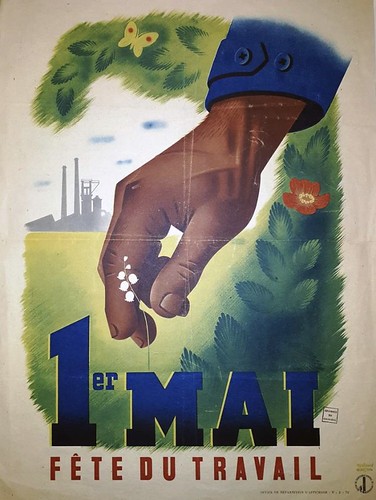Ed as “ambient” photographs, as they capture dynamic elements of faces plus the atmosphere for instance expression, pose, and lighting (see Fig. 1; Jenkins et al., 2011; Sutherland et al., 2013; Vernon, Sutherland, Young, Hartley, 2014). Importantly, influential models PubMed ID:http://www.ncbi.nlm.nih.gov/pubmed/21310658 of social trait judgments that have beengenerated by ratings of studio-captured imagery (Oosterhof Todorov, 2008) don’t totally capture impressions made from ambient facial pictures (Sutherland et al., 2013; Todorov Porter, 2014). Focus on invariant elements of facial look has also caused facial initially impression investigation to overlook the value that photograph selection has in modeorder BIBS 39 rating the social impact of a person’s face. Even so, recent function has begun to address this shortfall. In a single recent study, unfamiliar viewers had been capable to select studio-controlled pictures of unfamiliar faces that accentuated traits related to distinct scenarios: for example, picking images to get a resume that accentuated impressions of competence, relative to other images of that individual (Todorov Porter, 2014, Experiments two three). Separately, research of impression management in on-line  social networks have found that people report selecting images to transmit desirable impressions (Siibak, 2009) and that dating profile photos are likely to portray people today to become more eye-catching than images taken in a laboratory (Hancock Toma, 2009). Critically, nevertheless, the process of self-selecting profile pictures has not been studied experimentally. Thus, when it really is clear that variation in pictures of the identical face can modulate social impression formation (see also Jenkins et al., 2011; Wu, Sheppard, Mitchell, 2016), it’s not clear how well folks exploit this variation to conferFig. 1 Instance image sets provided by two participants in the Profile Image Dataset. Every single participant chosen probably the most and least probably image to become utilized in 3 social media contexts (see Fig. 3a), then rated the likelihood that each image will be made use of in every context, prior to rating trait impressions. They then repeated this procedure with an unfamiliar face. Images employed with permission and also the complete Profile Image Dataset is accessible on the net in More fileWhite et al. Cognitive Investigation: Principles and Implications (2017) two:Page 3 offavorable impressions. This can be significant for the reason that perception of one’s own face is often much less veridical than perception of other faces. One example is, when asked to select pictures that represent the best likeness of themselves from photo albums, participants pick out photos which are much less representative of their present appearance than pictures chosen by people with no prior familiarity (White, Burton, Kemp, 2015). Prior research also report systematic biases to choose images of their own face as far better likenesses once they happen to be digitally altered to become more typical (Allen, Brady, Tredoux, 2009), additional appealing (Epley Whitchurch, 2008; Zell Balcetis, 2012), and more trustworthy (Verosky Todorov, 2010); probably reflecting a common bias to evaluate oneself a lot more favorably than other individuals (Epley Whitchurch, 2008; cf. Brown, 2012). Provided that people seem to be sensitive to variation in impressions produced by diverse photographs (Todorov Porter, 2014) and are motivated to portray themselves favorably in profile photos (Hancock Toma, 2009; Siibak, 2009), we predicted that individuals could be able to choose images of themselves to accentuate good traits. Moreover, we compared the ben.
social networks have found that people report selecting images to transmit desirable impressions (Siibak, 2009) and that dating profile photos are likely to portray people today to become more eye-catching than images taken in a laboratory (Hancock Toma, 2009). Critically, nevertheless, the process of self-selecting profile pictures has not been studied experimentally. Thus, when it really is clear that variation in pictures of the identical face can modulate social impression formation (see also Jenkins et al., 2011; Wu, Sheppard, Mitchell, 2016), it’s not clear how well folks exploit this variation to conferFig. 1 Instance image sets provided by two participants in the Profile Image Dataset. Every single participant chosen probably the most and least probably image to become utilized in 3 social media contexts (see Fig. 3a), then rated the likelihood that each image will be made use of in every context, prior to rating trait impressions. They then repeated this procedure with an unfamiliar face. Images employed with permission and also the complete Profile Image Dataset is accessible on the net in More fileWhite et al. Cognitive Investigation: Principles and Implications (2017) two:Page 3 offavorable impressions. This can be significant for the reason that perception of one’s own face is often much less veridical than perception of other faces. One example is, when asked to select pictures that represent the best likeness of themselves from photo albums, participants pick out photos which are much less representative of their present appearance than pictures chosen by people with no prior familiarity (White, Burton, Kemp, 2015). Prior research also report systematic biases to choose images of their own face as far better likenesses once they happen to be digitally altered to become more typical (Allen, Brady, Tredoux, 2009), additional appealing (Epley Whitchurch, 2008; Zell Balcetis, 2012), and more trustworthy (Verosky Todorov, 2010); probably reflecting a common bias to evaluate oneself a lot more favorably than other individuals (Epley Whitchurch, 2008; cf. Brown, 2012). Provided that people seem to be sensitive to variation in impressions produced by diverse photographs (Todorov Porter, 2014) and are motivated to portray themselves favorably in profile photos (Hancock Toma, 2009; Siibak, 2009), we predicted that individuals could be able to choose images of themselves to accentuate good traits. Moreover, we compared the ben.
